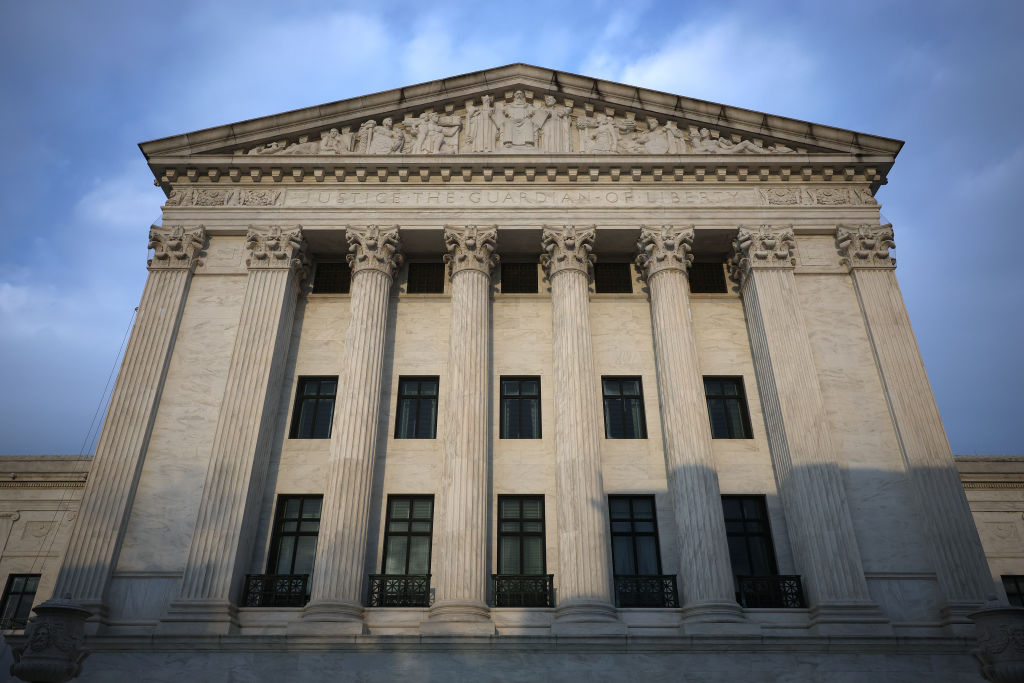Setting the stage for a serious ruling on presidential energy, the Supreme Courtroom on Tuesday agreed to resolve whether or not a 1977 federal regulation giving the president sure emergency powers allowed President Donald Trump to levy tariffs on nearly all goods imported into america by a sequence of government orders.
In a quick order issued by the courtroom’s Public Info Workplace on Tuesday afternoon, the courtroom introduced that it had granted evaluation in two instances: Learning Resources v. Trump, wherein two small companies had requested the justices to weigh in on Trump’s energy to impose the tariffs with out ready for a federal appeals courtroom to rule on the Trump administration’s attraction; and Trump v. V.O.S. Selections, wherein the Trump administration had requested the courtroom to evaluation a ruling by a special federal appeals courtroom placing down the tariffs. The courtroom will fast-track the 2 instances, which shall be argued collectively, and maintain oral arguments in early November.
In a sequence of government orders, Trump imposed tariffs that fall into two classes, which collectively cowl a variety of merchandise from U.S. buying and selling companions. The primary class, referred to as the “trafficking tariffs,” apply to items from Canada, China, and Mexico, which in Trump’s view haven’t finished sufficient to halt the circulate of fentanyl into america. The second class, referred to as the “reciprocal tariffs,” impose a minimal tariff of 10% (which may escalate as much as 50%) on merchandise from nearly all international locations.
The regulation on the middle of the case is the International Emergency Economic Powers Act, a 1977 regulation that permits the president to take motion to “take care of any uncommon and extraordinary menace, which has its supply in entire or substantial half outdoors america, to the nationwide safety, overseas coverage, or economic system of america” if he declares a nationwide emergency “with respect to such menace.” When he imposed the tariffs, Trump relied on IEEPA, and particularly on a provision of the regulation that authorizes the president, in instances of nationwide emergencies, to “regulate . . . importation” of “property wherein any overseas nation or a nationwide thereof has any curiosity.”
Two small family-owned companies, Studying Assets and hand2mind, challenged the tariffs in federal courtroom in Washington, D.C. They contend that paying the tariffs in 2025 will value them $100 million – practically 45 instances as a lot as they paid in 2024.
In a call on Could 29, U.S. District Choose Rudolph Contreras dominated that the IEEPA tariffs had been unlawful and barred the Trump administration from implementing the tariffs towards the 2 companies.
In an uncommon transfer, the challengers came to the Supreme Court in June, asking the justices to take up the case with out ready for the U.S. Courtroom of Appeals for the District of Columbia Circuit to resolve the Trump administration’s attraction. They urged the justices to behave shortly, telling them that “paralyzing uncertainty” is created when tariffs are “added and subtracted at will.”
The Trump administration urged the courtroom to remain out of the dispute. It countered that the Studying Assets case did “not warrant the extraordinary step of granting” evaluation earlier than the D.C. Circuit had weighed in on the federal government’s attraction, notably when the D.C. Circuit had “expedited its consideration of the attraction.” Furthermore, it added, Contreras didn’t have the ability to take up the challengers’ case.
The justices denied the request by Studying Assets and hand2mind to fast-track the consideration of their petition for evaluation.
In the meantime, in a pair of separate challenges to the tariffs, filed by one other group of small companies and a gaggle of states, led by Oregon, the Courtroom of Worldwide Commerce on Could 28 dominated that each classes of tariffs – the trafficking tariffs and the reciprocal tariffs – exceeded Trump’s energy below IEEPA.
By a vote of 7-4, the U.S. Courtroom of Appeals for the Federal Circuit, which hears appeals from the Courtroom of Worldwide Commerce, upheld that ruling in a prolonged opinion on Aug. 29. It defined that, amongst different issues, when “Congress intends to delegate to the President the authority to impose tariffs, it does so explicitly, both by utilizing unequivocal phrases like tariff and responsibility, or by way of an general construction which makes clear that Congress is referring to tariffs.”
In a petition for review filed on Sept. 3, U.S. Solicitor Basic D. John Sauer – the Trump administration’s prime lawyer earlier than the Supreme Courtroom – advised the justices that the “tariffs and the following commerce negotiations with all our main buying and selling companions are pulling America again from the precipice of catastrophe, restoring its respect and standing on the planet, eliminating many years of unfair and uneven commerce insurance policies which have gutted our manufacturing capability and navy readiness, and inducing our commerce companions to speculate trillions of {dollars} within the American economic system.”
The small companies agreed that the Supreme Courtroom ought to evaluation the Federal Circuit’s ruling, however they continued to insist that “the tariffs are illegal for a number of causes, the federal government’s arguments on the contrary are flawed, and invalidating these tariffs won’t deprive the President of the flexibility to impose different tariffs and negotiate lawful commerce agreements below the quite a few statutes that Congress has enacted for that function.”
Oregon and the opposite states echoed that sentiment in their brief, telling the justices that “though the Federal Circuit bought it proper—and though the petition is plagued by inaccuracies, hyperbole, and citations to materials outdoors the abstract judgment document—the state respondents agree that this Courtroom ought to grant expedited evaluation.”
On Tuesday afternoon, the Supreme Courtroom did simply that. It instructed the Trump administration to file its opening transient on Sept. 19, with the challengers’ briefs to observe on Oct. 20. “The instances shall be set for argument within the first week of the November 2025 argument session,” which begins on Nov. 3.
Posted in Featured, Merits Cases
